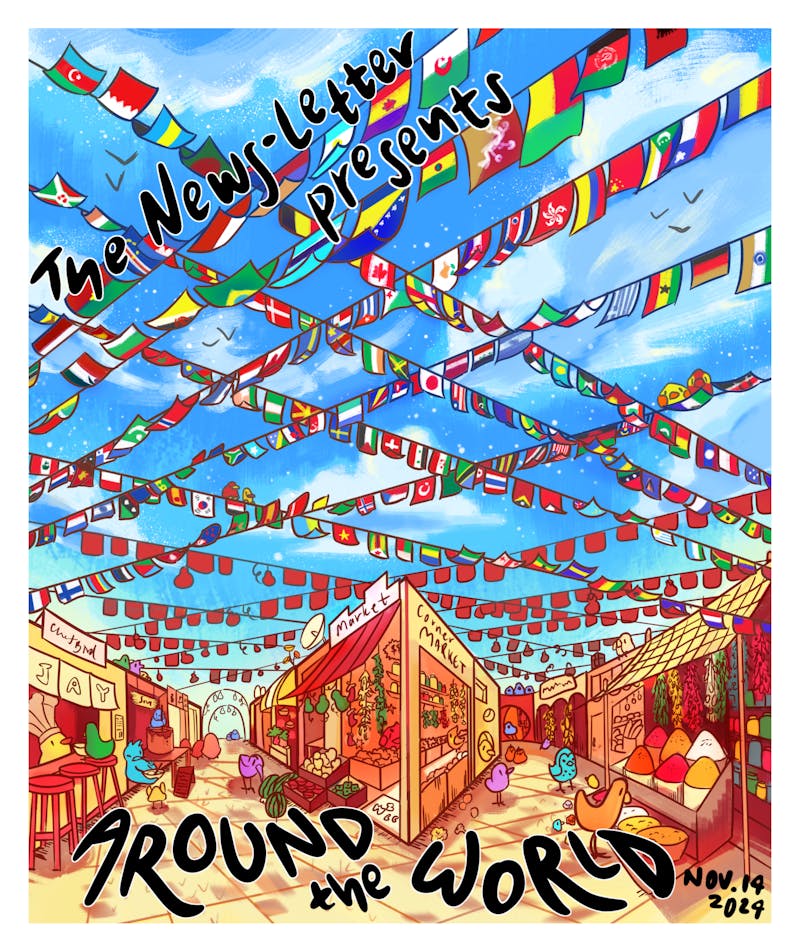Chances are, if you've done any online gaming in your college career, you've heard the term DotA (affectionately abbreviated from Defense of the Ancients).
You'll hear people talking about it like its some kind of secret society, but when you ask, the answers all sound like nonsense. At least, that was my experience.
The game is pretty simple, all in all. Each match pits two teams against one another, generally five versus five, who are each trying to destroy the enemy base.
You play as a unique character (some games have as many as 75 different heroes) with unique abilities. You kill monsters and other players to gain levels and items that will, eventually, help you win the game. The game's origins are steeped in another game, Warcraft III, wherein you can play some of these heroes in a different strategy setting.
Now, DotA is beginning to take new meaning. In the past two years, a host of similar games have popped up. S2 Games's Heroes of Newerth (HoN), Riot Games's League of Legends (LoL) and Valve's DotA 2 are all newcomers onto the DotA scene, attempting to update the popular form and bring with it a new genre of games known as Multiplayer Online Battle Arenas (also known as MOBAs).
But DotA specifically has opened my eyes about the nature of game development, and how it strangely differs from other art forms.
Firstly, DotA is a genre defined by a game. Now, many game genres can be defined this way. The Elder Scrolls and Final Fantasy for RPGs, Doom or Halo for shooters, Starcraft and Civilization for strategy. But no game has, ubiquitously, come so wholeheartedly from another.
The MOBA genre is defined by that game, and perfection in the genre has, by and large, been about perfection of that game.
Heroes of Newerth subscribes to this philosophy. It's the most faithful adaptation of the original DotA mod and it proudly rides that "updated DotA" vibe into the top three versions of MOBA games.
DotA 2 may be developed by Valve, the masterminds behind Portal, Half-Life and Team Fortress 2, but its lead developer is IceFrog, the core designer of the updated DotA All-Stars. Guinsoo and Pendragon, the two founders of DotA All-Stars, were behind development for League of Legends.
At this point, it seems as though MOBAs will remain stagnant and stale, cannibalizing old material and design philosophies instead of innovating.
And innovation is the heart of gaming. The difference between Pong and Skyrim is absolutely massive considering the years that span the two. In the same 39-year lifespan, movies had only just begun to develop sound technology.
Another 40 after that and color was barely being used universally. Still another 40 years later, and we're just approaching a new threshold in film, 3D technology.
So, while film has gone from short, silent, black and white narrative, to long, loud, vivid narrative, it's taken three times as long to do so.
Nowadays, games are defined in terms of months rather than years. Halo redefined shooters, followed by Gears of War and Call of Duty. Even Mass Effect has its hands in the modern shooting game.
MOBAs have, on the flipside, been a recreation and imitation of a popular modification to an altogether different game (in this case, Warcraft III). And, it would seem, that most iterations of the game have, more or less, been the same.
That notion is, in the long run, less true. But it does highlight a peculiar phenomenon I'll call the DotA Anomaly. This is that, strangely, MOBAs have been the only games to successfully and smoothly integrate new content on a timely basis.
Because in all truth, you could compare DotA, DotA All-Stars, HoN, League of Legends and even the new releases on one base level: they're constantly, consistently airing new content.
My best experience is with League, but every MOBA game does the same. Every few (normally three) weeks, a new patch is released, editing the gameplay mechanics, introducing new aspects, retooling balance or user interface.
For comparison, World of Warcraft offers content patches about once every six months. The DotA anomaly is actually a massive step forward for the industry as a whole.
Gameplay that is constantly changing, constantly evolving, but never shrinking or decaying, is the key to user retention.
Content never gets stale or boring, while at the same time, it never gets outdated.
The hero I've been practicing with since launch day is still around. And just because we've added 50 new ones doesn't mean your first favorite is any less enjoyable or applicable.
Were I an expert analyst, I'd point to the numbers. League of Legends has 15 million registered users, about one million of which are active on a daily basis.
That number was reached by World of Warcraft three years ago, and has never been surpassed since.
And though I don't think it will take the industry by storm (people will always want to produce and consume new AAA games), it will redefine the way we play older online games.
Getting some real content and longevity out of them has always been a priority for developers. Maybe they've just cracked the code.














